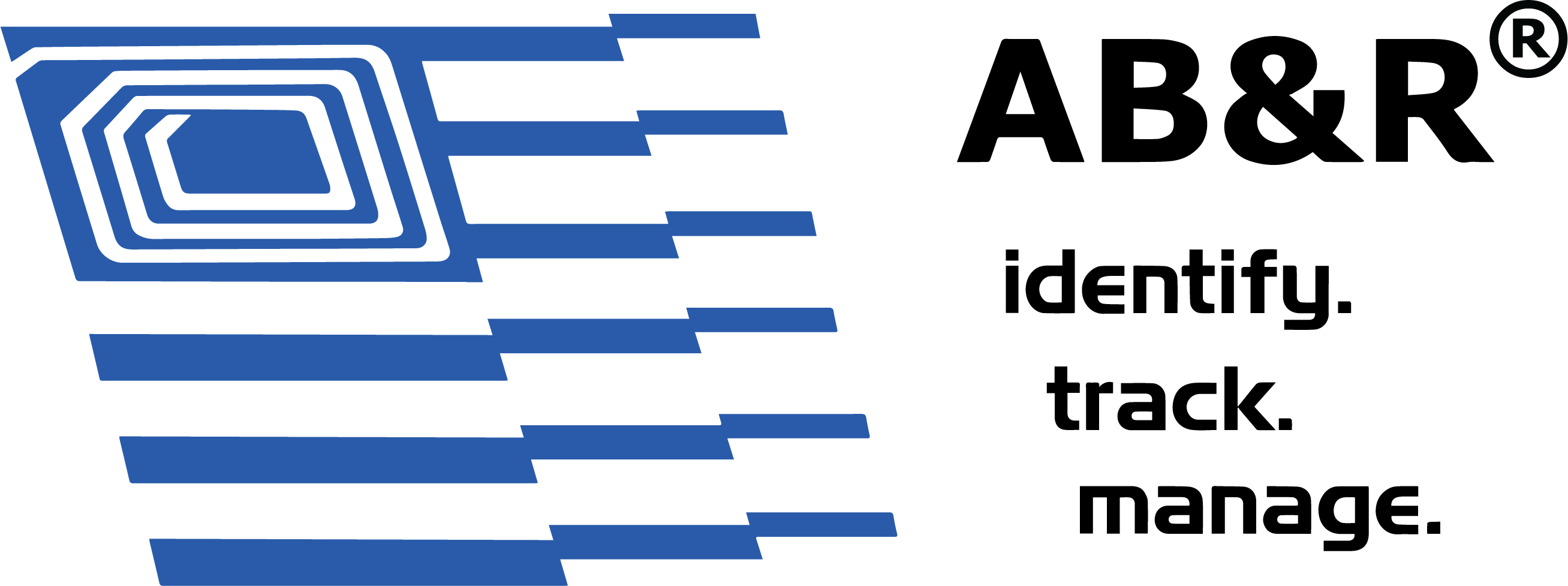What is RFID and How Does RFID Work?
RFID stands for radio-frequency identification and refers to a technology where digital data encoded in RFID tags or smart labels is captured by a reader via radio waves. RFID is similar to barcoding in that data from a tag or label is captured by a device and stored in a database. RFID has several advantages over barcode-based systems. Most notably, RFID tag data can be read without a line of sight, whereas barcodes must be aligned with an optical scanner.
If you are considering implementing an RFID solution, contact the RFID experts at AB&R® (American Barcode and RFID) to get guidance tailored to your business.
How does RFID Work?
RFID is part of Automatic Identification and Data Capture (AIDC) technologies, which identify objects, collect data, and send it to computer systems with little or no human input.
An RFID system includes:
- Tag or smart label – Stores data and has an antenna to send it.
- Reader – Receives data from the tag.
- Antenna – Transmits radio waves between the tag and reader.
The reader converts the radio signal into usable data, sending it to a computer for storage and analysis. In real-world environments — from warehouses and factories to hospitals and retail stores — RFID tags are read automatically in designated “read zones” such as dock doors, conveyor belts, secure entryways, or store exits. This allows for:
- Instant inventory updates when products move in or out.
- Real-time location tracking for tools, equipment, or high-value assets.
- Automated process checks without the need for manual scanning.
RFID Tags and Smart Labels
RFID Tags
Contain an integrated circuit and antenna, often enclosed in materials suited for the application. For example, an employee ID badge may embed the tag between layers of plastic. Tags are either:
- Passive tags require power from the reader to transmit data and are smaller and less expensive
- Active tags have a built-in power supply, enabling continuous data transmission
Smart Labels
Combine RFID and barcode technology on a printable adhesive label. These labels may also display human-readable text or graphics and can be encoded and printed on-demand with specialized printers.
For more detail, refer to our article: Passive RFID Tags vs. Active RFID Tags.
RFID Applications and Benefits
RFID technology is used across a wide range of industries for critical tasks, including:
- Inventory management
- Asset tracking
- Personnel tracking
- Access control
- ID badging
- Supply chain management
- Counterfeit prevention (such as in the pharmaceutical industry)
While RFID has been in use since World War II, demand continues to rise—driven by requirements from the U.S. Department of Defense, major retailers like Wal-Mart, and organizations seeking more efficient tracking solutions.
Businesses that currently rely on barcodes are often excellent candidates for upgrading to RFID or a hybrid system. Compared to traditional barcodes, RFID:
- Stores more data in each tag
- Withstands wear and tear without damage from tearing, smearing, or fading
- Minimizes errors and increases tracking accuracy
The Future of RFID
From longer read ranges to smaller, more affordable tags, RFID technology continues to evolve. Industries that need real-time visibility, traceability, and efficiency are finding new ways to integrate RFID into their operations — from automated warehouse receiving to patient tracking in healthcare.
For more information on how RFID works and how it can integrate into your business processes, read our RFID Basics guide or contact AB&R® (American Barcode and RFID).
